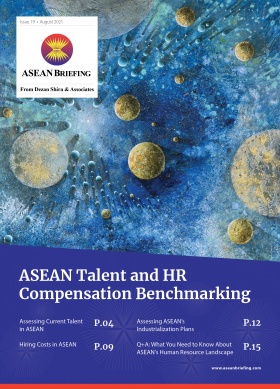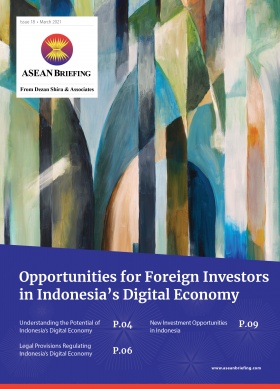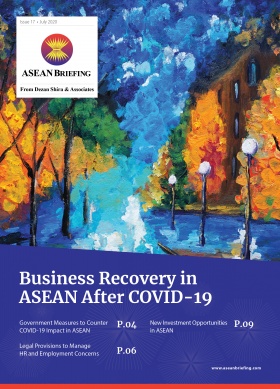The US-ASEAN Expanded Economic Engagement Initiative
The US-ASEAN Expanded Economic Engagement (E3) Initiative is a framework to promote increased trade, investment, and economic cooperation between the US and ASEAN.
The E3 Initiative was originally launched at a US-ASEAN Leaders Meeting in Cambodia in 2012. It was part of then-US president Barack Obama’s “pivot to Asia” policy, as his country sought to make Southeast Asia a higher strategic priority in its foreign policy.
Since then, the E3 Initiative has led to a number of concrete policies and developments strengthening ties between the US and ASEAN. Further, because the E3 Initiative emphasizes improving ASEAN’s business environment, the agreement has proven beneficial to virtually all foreign businesses engaging with the region.Here, we offer an overview of the E3 Initiative and its importance for foreign investors in Southeast Asia.
The E3 Initiative at a glance
The US made the E3 Initiative a priority in 2012 to signal the country’s economic and political commitment to Southeast Asia, which had historically been uneven. Although the US and ASEAN already had a Trade and Investment Facilitation Agreement (TIFA) in place since 2006, the E3 Initiative promised increased efforts to facilitate trade and investment, strengthen the efficiency and competitiveness of trade flows and supply chains in ASEAN, and raise awareness of commercial activities.
Importantly, the US and ASEAN created the E3 Initiative with an emphasis on capacity building, such as by promoting regulatory coherence, removing technical barriers, and improving product quality for ASEAN as a group as well as its individual members. Successfully doing so would lay the groundwork for ASEAN members to join high-standard trade agreements — including the Trans-Pacific Partnership (TPP), a major trade deal that the Obama administration was pursuing at the time.
In addition to these big picture goals, the E3 Initiative included several concrete activities at launch. These were:
- Negotiating a US-ASEAN trade facilitation agreement, including simplified customs procedures and increased transparency of customs administration;
- Jointly developing information and communications technology principles to guide policymakers on issues such as cross-border information flows, localization requirements, and the role of regulatory bodies;
- Jointly developing investment principles, which would address essential elements of investment policies, including market access, non-discrimination, investor protections, transparency, and responsible business conduct; and
- Additional work on standards development and practices, small and medium-sized enterprises, and trade and the environment.
The US also pledged to apply USAID’s ASEAN Connectivity for Trade and Investment (ACTI) program to reinforce the E3 Initiative. The ACTI program was a five-year project that similarly aimed to improve ASEAN’s trade and investment-enabling environment through capacity building and other activities.
Accomplishments under the E3 initiative
Since its launch, the E3 initiative has proven fruitful. Each year, the US and ASEAN adopt a Work Plan for the E3 Initiative, setting forth short-term and long-term priorities to advance in the year ahead.
One of the notable successes of the E3 Initiative is equipping some ASEAN member states to qualify for modern trade deals. Although the US dropped out of the TPP in 2017 under President Trump, four ASEAN members — Brunei, Malaysia, Singapore, and Vietnam — successfully formed the Comprehensive and Progressive Agreement for Trans-Pacific Partnership (CPTPP), the successor to the TPP. Other ASEAN members may join the CPTPP in the future, such as Thailand and Indonesia.
Although the US ultimately did not join the TPP, raising the standards of ASEAN members to qualify for such a deal still benefits US trade and investment in the region. Further, it puts the US and ASEAN in a stronger position to form new trade deals in the future.
Additionally, the E3 Initiative has overseen the creation and implementation of a number of other programs. This includes the ASEAN-USAID Inclusive Growth in ASEAN through Innovation, Trade, and e-Commerce (IGNITE) program, which assists ASEAN in trade facilitation, digital economy, and science, technology, and innovation. Activities under the IGNITE program include creating the ASEAN Single Window to facilitate trade, promoting digital finance and cybersecurity, and supporting women scientists and entrepreneurs.
What is next for the E3 Initiative?
Now under the leadership of President Joe Biden, the US faces the task of revitalizing efforts to make Southeast Asia a strategic priority. Further strengthening the E3 Initiative could be a step towards this goal.
President Donald Trump did not attend for the third consecutive year the most recent annual ASEAN-US Summit, held in November 2020. In his place, the US sent National Security Adviser Robert O-Brien for the second time in a row, the lowest ranking representative since 2011.The lack of urgency given by the US in these meetings led some ASEAN members to downgrade their own delegations in response. In light of this friction, President Biden sent Vice President Kamala Harris to visit Singapore and Vietnam in August to signal the region’s importance to the US.
That month, the US and ASEAN finalized the E3 Work Plan for 2021-22, which focuses on post-pandemic economic recovery. Areas of emphasis in the new plan include digital economy, micro, small, and medium enterprises, sustainable development, trade facilitation, and labor and environment.
As trade tensions between the US and China persist, the US is in need of deepening ties with alternative suppliers, including those in ASEAN. Given the E3 Initiative’s emphasis on developing the digital economy, it stands to be especially relevant in cementing Southeast Asia’s position as a producer of electronic products and digital services.
According to Secretary of State Antony Blinken, the US will release a new Indo-Pacific Strategy in fall 2021. This strategy stands to illuminate in greater detail the direction of US foreign policy towards Southeast Asia in the coming years, as well as how the US will pursue greater economic integration with ASEAN, whether through the E3 Initiative or other measures.
About Us
ASEAN Briefing is produced by Dezan Shira & Associates. The firm assists foreign investors throughout Asia and maintains offices throughout ASEAN, including in Singapore, Hanoi, Ho Chi Minh City, and Da Nang in Vietnam, Munich, and Esen in Germany, Boston, and Salt Lake City in the United States, Milan, Conegliano, and Udine in Italy, in addition to Jakarta, and Batam in Indonesia. We also have partner firms in Malaysia, Bangladesh, the Philippines, and Thailand as well as our practices in China and India. Please contact us at asia@dezshira.com or visit our website at www.dezshira.com.








